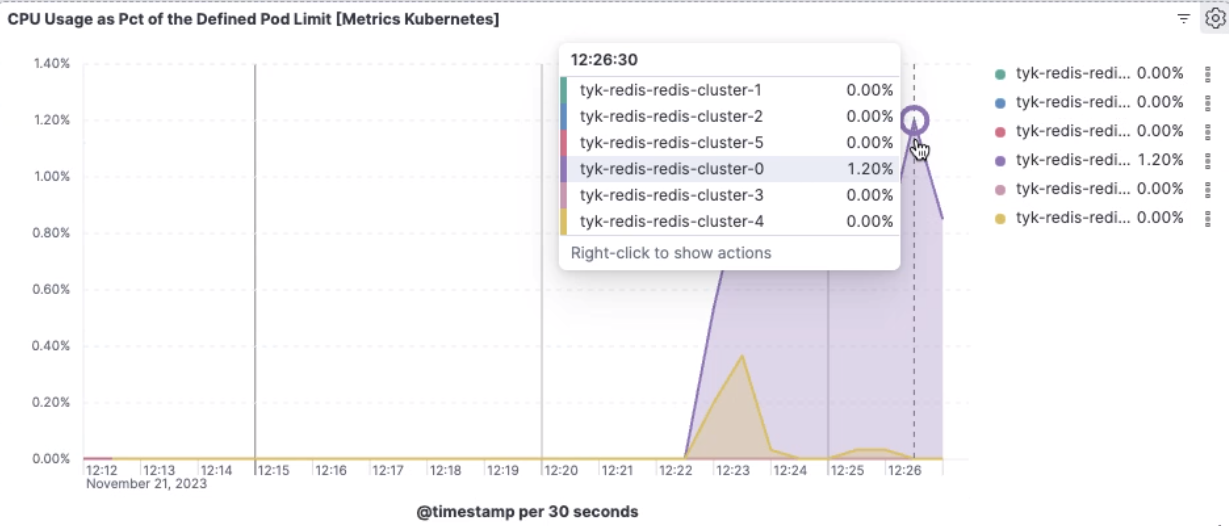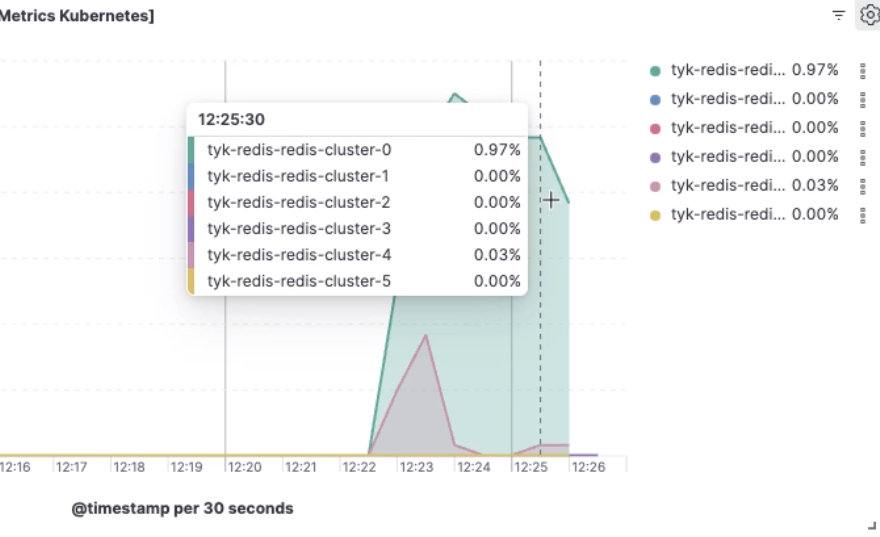How To Reduce CPU Usage In A Redis Cluster
Last updated: 4 minutes read.
This FAQ explains a potential reason for high CPU usage in a Redis node within a Redis Cluster and explains the steps that can be taken to resolve the issue.
What does high CPU usage in a Redis node within a Redis Cluster mean?
When a single Redis node within a Redis Cluster exhibits high CPU usage, it indicates that the CPU resources of that particular node are being heavily utilised compared to others in the cluster.
The illustration below highlights the scenario where a single Redis node is exhibiting high CPU usage of 1.20% within a Redis Cluster.

What could be causing this high CPU usage?
One possible reason for high CPU usage in a single Redis node within a Redis Cluster is that analytics features are enabled and keys are being stored within that specific Redis node.
How does storing keys within a single Redis server contribute to high CPU usage?
A high volume of analytics traffic can decrease performance, since all analytics keys are stored within one Redis server. Storing keys within a single Redis server can lead to increased CPU usage because all operations related to those keys, such as retrieval, updates and analytics processing, are concentrated on that server. This can result in heavier computational loads on that particular node. This leads to high CPU usage.
What can be done to address high CPU usage in this scenario?
Consider distributing the analytics keys across multiple Redis nodes within the cluster. This can help distribute the computational load more evenly, reducing the strain on any single node and potentially alleviating the high CPU usage.
In Redis, key sharding is a term used to describe the practice of distributing data across multiple Redis instances or shards based on the keys. This feature is provided by Redis Cluster and provides horizontal scalability and improved performance.
Tyk supports configuring this behaviour so that analytics keys are distributed across multiple servers within a Redis cluster. The image below illustrates that CPU usage is reduced across two Redis servers after making this configuration change.

How do I configure Tyk to distribute analytics keys to multiple Redis shards?
Follow these steps:
1. Check that your Redis Cluster is correctly configured
Confirm that the enable_cluster configuration option is set to true in the Tyk Gateway, Tyk Dashboard and Tyk Pump configuration files. This setting
informs Tyk that a Redis Cluster is in use for key storage.
Ensure that the addrs array is populated in the Tyk Gateway and Tyk Pump configuration files (tyk.conf and pump.conf) with the addresses of all Redis Cluster nodes. If you are using Tyk Self Managed (the licensed product), also update Tyk Dashboard configuration file (tyk_analytics.conf). This ensures that the Tyk components can interact with the entire Redis Cluster. Please refer to the configure Redis Cluster guide for further details.
2. Configure Tyk to distribute analytics keys to multiple Redis shards
To distribute analytics keys across multiple Redis shards effectively you need to configure the Tyk components to leverage the Redis cluster’s sharding capabilities:
- Optimise Analytics Configuration: In the Tyk Gateway configuration (tyk.conf), set analytics_config.enable_multiple_analytics_keys to true. This option allows Tyk to distribute analytics data across Redis nodes, using multiple keys for the analytics. There’s a corresponding option for Self Managed MDCB, also named enable_multiple_analytics_keys. Useful only if the gateways in the data plane are configured to send analytics to MDCB.
- Optimise Connection Pool Settings: Adjust the optimisation_max_idle and optimisation_max_active settings in the configuration files to ensure that the connection pool can handle the analytics workload without overloading any Redis shard.
- Use a Separate Analytics Store: For high analytics traffic, you can opt to use a dedicated Redis Cluster for analytics by setting enable_separate_analytics_store to true in the Tyk Gateway configuration file (tyk.conf) and specifying the separate Redis cluster configuration in the
analytics_storagesection. Please consult the separated analytics storage guide for an example with Tyk Pump that can equally be applied to Tyk Gateway. - Review and Test: After implementing these changes, thoroughly review your configurations and conduct load testing to verify that the analytics traffic is now evenly distributed across all Redis shards.
By following these steps you can enhance the distribution of analytics traffic across the Redis shards. This should lead to improved scalability and performance of your Tyk deployment.